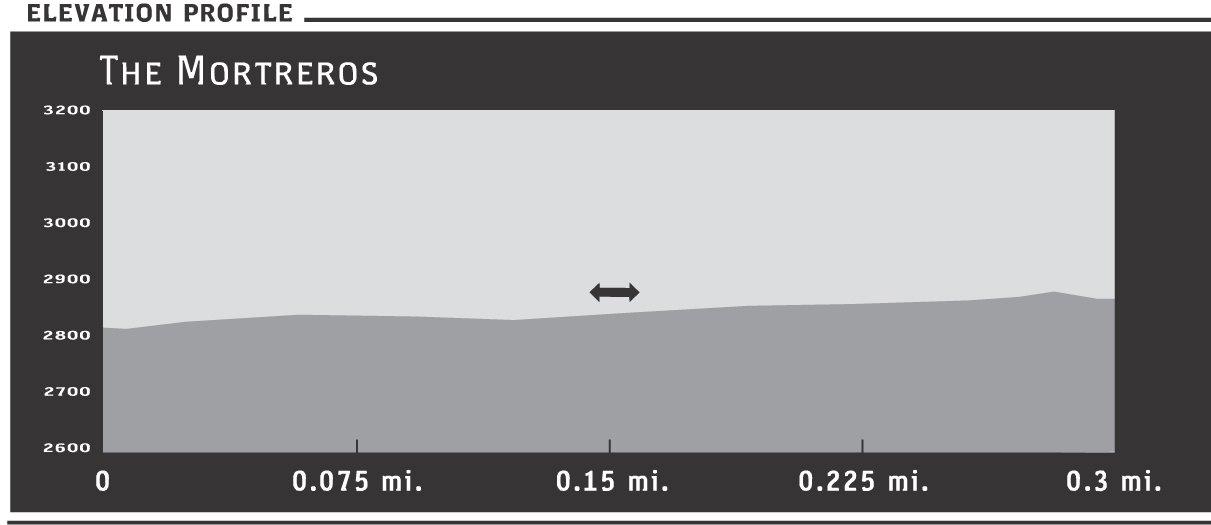18 The Mortreros
SCENERY: 
DIFFICULTY: 
TRAIL CONDITION: 
SOLITUDE: 
CHILDREN: 
DISTANCE: 0.6 miles round trip
HIKING TIME: 0.5–1 hour
OUTSTANDING FEATURES: Huge boulder groupings with Native American mortreros; possible wildlife including quail, coyotes, and doves
This nearly flat, easy trail leads to the historic site of a Kumeyaay village where the rocks hold evidence of Indian family life.
Directions: Where Highway 78 meets County Route S2 (the Great Overland Route of 1849), head south on S2 for 6.4 miles to Blair Valley Road. Turn left onto this flat, dirt road suitable for most vehicles. After approximately 3.5 miles, park in the pullout on the right, marked “Mortreros.”
| GPS Coordinates | 18 THE MORTREROS | |
| UTM Zone (WGS84) | 11S | |
| Easting | 558076 | |
| Northing | 3652440 | |
| Latitude–Longitude | N 33º 0’ 31.8779” | |
| W 116º 22’ 41.7026” |


 The short, easy trail slopes gradually upward, but with only 60 feet gained over the 0.25 miles out, the climb will hardly be noticed. During the walk, listen for the calls of quail, watch for jackrabbits, and enjoy the vast space of the sky overhead. Native Americans who lived here in the milder months of September to May beginning more than 1,000 years ago would have been alert to these same sounds of nature.
The short, easy trail slopes gradually upward, but with only 60 feet gained over the 0.25 miles out, the climb will hardly be noticed. During the walk, listen for the calls of quail, watch for jackrabbits, and enjoy the vast space of the sky overhead. Native Americans who lived here in the milder months of September to May beginning more than 1,000 years ago would have been alert to these same sounds of nature.
Just a few steps onto this wide, sandy trail lead you to huge boulder groupings, which upon close inspection reveal mortreros—the bowl-like pits formed in the rocks where Native Americans ground mesquite beans into meal. Mixed with water, the mesquite-bean meal became a thick, edible mush. The Kumeyaay also formed cakes from the mush, which they dried for later eating, perhaps during journeys into surrounding mountains to collect piñon nuts—another nutrient-rich food staple. The Indians utilized all parts of their food sources, using mesquite from root to leaves. Spring blooms were brewed into a tea or roasted and eaten. Tea from mesquite leaves helped remedy diarrhea, leaves and twigs offered disinfectant properties for cuts and scrapes, while the pods offered a conjunctivitis cure.
As you ponder what it might have been like to live in this rocky village, you may be tempted to imitate the actions of ancient peoples by kneeling atop one of the wide boulders and using a small smooth rock to grind imaginary seeds in one of the many depressions. Resist the urge, though—this is an archaeological site, and disturbing it is against the law.